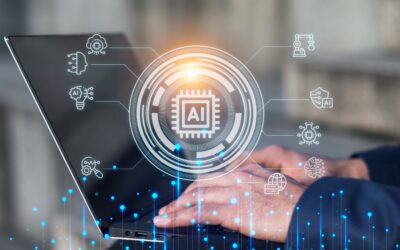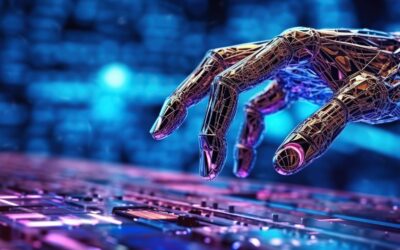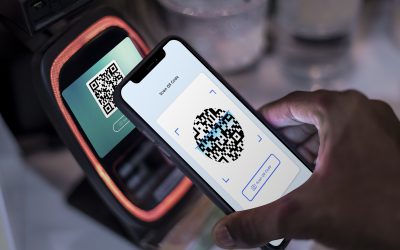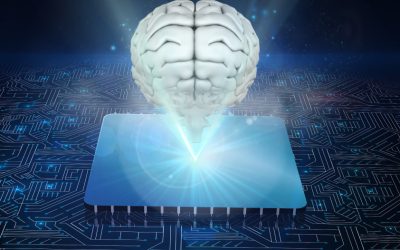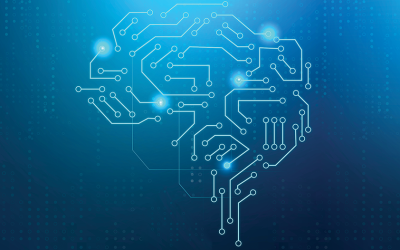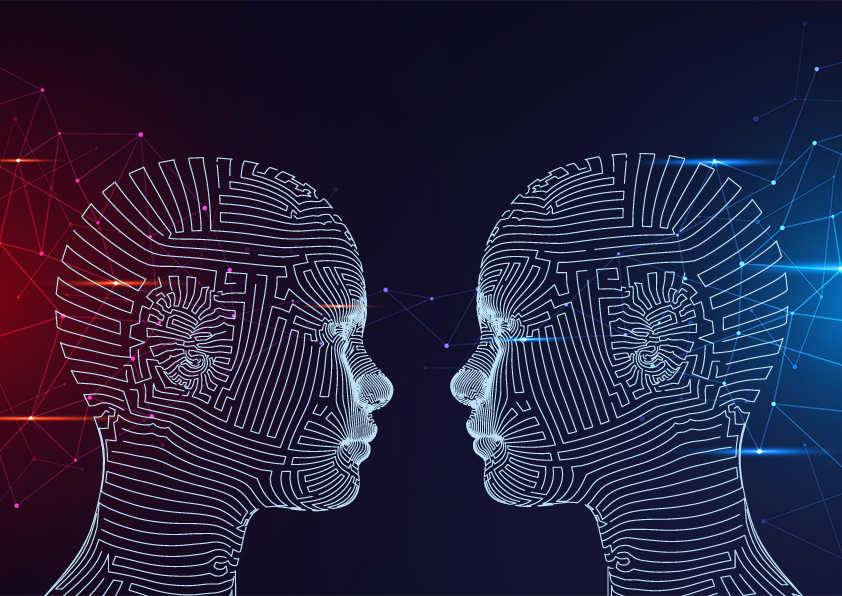
AI-Powered Recommendation Engines and Digital twins
Imagine that you had a perfect digital copy of the physical world: a digital twin. This twin would enable you to collaborate virtually, intake sensor data and simulate conditions quickly, understand what-if scenarios clearly, predict results more accurately…. Meanwhile many companies are using digital twins in a variety of ways. For example, the automotive and aerospace industry are using digital twins as an essential tool for optimizing entire manufacturing value chains and innovating new products. And Singapore as a pioneer of smart city projects, uses a detailed virtual model of itself in urban planning, maintenance, and disaster readiness projects.
It is estimated that the market for digital twins, which was worth US$3.8 billion in 2019, will reach US$35.8 billion in value by 2025.
What accounts for this kind of growth? And why now? Since more than 20 years pioneering companies have explored ways to use digital models to improve their products and processes. While the potential of digital twins was clear even then, many other companies found that the connectivity, computing, data storage, and bandwidth required to process massive volumes of data involved in creating digital twins made them not economically viable.
The digital twins trend is gaining momentum thanks to rapidly evolving simulation and modeling capabilities, better interoperability and IoT sensors, and more availability of tools and computing infrastructure.
As a result digital twins and Artificial Intelligence have grown rapidly and are considered to be key enablers for Industry 4.0. As a digital representation of a physical entity, it helps businesses make model-driven decisions. The base of digital twins and AI in industrial sectors is extremely dependent on the systematic and in-depth integration of domain-specific expertise. Simulations without digital twins are expensive so data scientists use data to develop models that replicate real-world assets in the digital space. IoT sensors, log files, and other relevant information are used by digital twins to collect real-time data for the accurate modeling of assets. In manufacturing, the digital twins are a virtual representation of the as-designed, as-built, and as-maintained physical product. It is augmented by real-time process data and analytics based on accurate configurations of the physical product, production systems, or equipment.
How the digital twins is being implemented today
Asset Lifecycle Management (ALM) is the major focus area where digital twins have been implemented. Asset maintenance is an extremely time-consuming and expensive task. However, today technologies like augmented reality can access virtual engineering models that can be covered over physical equipment performing maintenance using specialized AR goggles. This enables maintenance technicians to use the most accurate data engineering ensuring the right maintenance and performance specifications are executed efficiently. These same maintenance methods can be applied to machines, work cells, and factory production systems. Today, advanced virtual simulation technology is an integral element of the digital twins. Simulation platforms can simulate and validate the functionality of product design simultaneously allowing designers to validate their designs.
Different ways digital twins are used to improve manufacturing operations:
Product Design
During the design phase, digital twins can be a virtual prototype and is adjusted to test various simulations/designs before funding a solid prototype. Digital twins allow manufacturers and engineers to test designs under any circumstances to create a perfect product. This helps to save time and cost by lowering the number of iterations to get the product into production without any errors.
Process Optimization
To create digital twins of the process and analyze performance indicators, IoT sensors can be used on a manufacturing line. Digital twins help to improve the existing manufacturing process by using advanced simulations based on real-world data given by sensors. Using historical and real-time data, AI can simulate the entire process and identify areas that can be improved. This helps to identify new ways to optimize production, improve production practices, reduce variances, and perform root-cause analysis.
Quality Management
You can monitor what is going on in real-time with the help of IoT sensors across your production line to maintain top-quality production and to eliminate rework. Digital twins can simulate every part of the production process to identify errors and test different materials.
Supply Chain Management
Supply chain management has a tremendous impact on business success. Delivering products to the consumer on time is the most important aspect of the manufacturing industry. Currently, most manufacturers rely on distribution firms to ensure on-time delivery. These distribution firms are also dependent on digital twins to track, analyze key performance indicators and improve performance. This helps production and distribution to reduce warehousing costs and increase customer satisfaction.
Predictive Maintenance
Digital twins can be used to run simulations and predict how machines perform in the future. Manufacturers can use AI and digital twins to identify the date when a machine will crash. This will help to reduce downtime, organize maintenance, and lower repair costs. The need for preventative repairs or maintenance before a severe problem occurs is most conducive to smooth operations.
Enhance Customer Experience
Digital twins collect data over time that give insights that serve to improve performance, management end-user experience, and distribution. Digital twins help understand how products are performing in the real world and how customers are using them. The data can also be used to improve customer experience and customize the product according to customer expectations which can be achieved only with digital twins technology.
Digital twins – the future of manufacturing
Digital twins use multiple technologies like AI, machine learning, and augmented reality that helps to gain information on how to improve business processes. It gives the ability to connect numerous machines, processes, and solutions into one working system. Digital twins generate highly valuable insights that help your organization to grow and meet industry challenges.
Imagine a situation where a manufacturer has newly set up a plant to manufacture cold drinks. He is very aware of the fact that the market he is catering to is highly segmented, volatile, and subject to seasonality.
He needs to find answers to the following questions:
- Who is his target customer and in which pockets of the city is he/she concentrated?
- What are these customers preferences in terms of flavor, pack size, price etc?
- What is likely to be the offtake/area/ day? across the year?
- What is the ideal balance of production volume to offtake and raw material purchase?
In times gone by, it took years of experience and costly mistakes to arrive at these answers. Today a simulation of the market and the production facility can provide the answers sometimes literally in minutes.
.
Related Posts
AI Toolbox: Creative Content Beyond ChatGPT & BARD
Introduction: In the dynamic landscape of artificial intelligence (AI), ChatGPT and BARD have garnered significant attention for their capabilities in natural language processing and music composition. However, a rich tapestry of AI tools exists...
Ethical Considerations in Generative AI: Ensuring Fair and Responsible Data Analytics
Introduction Generative AI, a transformative subset of artificial intelligence, is revolutionizing data analytics and machine learning. It empowers machines to generate data, images, and text that mimic human creativity. While the potential of...
Building a Better Future with Digital Public Goods
The world is on the cusp of digitization! In this era of digitization, we have transformed the way we communicate, interact, and access information. It has not only changed our personal lives but also has brought an evident transformation in the...
The Role of Artificial Intelligence in Cyber Security
In an era characterised by rapid technological advancements and increasing digitalisation, the field of cyber security faces an escalating and ever-evolving threat landscape. As cyber threats become more sophisticated, organisations must employ...
TinyML: The Future of Edge AI
Artificial intelligence (AI) has been a hot topic in recent years and with good reason. AI has the potential to transform countless industries and improve our lives in numerous ways. However, as powerful as AI can be, it also requires a lot of...
The Evolution of Federated Learning
Uber settled an inquiry into a data breach that exposed the personal data of more than 5,00,000 drivers in 2016 by paying $148 million. A GDPR breach resulted in a $57 million fine for Google in 2020. On-growing data privacy and data breach issues...
Subscribe To Our Newsletter
Lorem ipsum dolor sit amet, consectetuer adipiscing elit. Aenean commodo ligula eget dolor. Aenean massa. Cum sociis natoque penatibus et magnis dis parturient montes, nascetur ridiculus mus

Company
About us
Careers
Contact
Awards
Blog
Offerings
Strategy & Consulting
Managed Services
Solutions
Digital Public Goods
Solutions
Data Solutions
Industry Solutions

